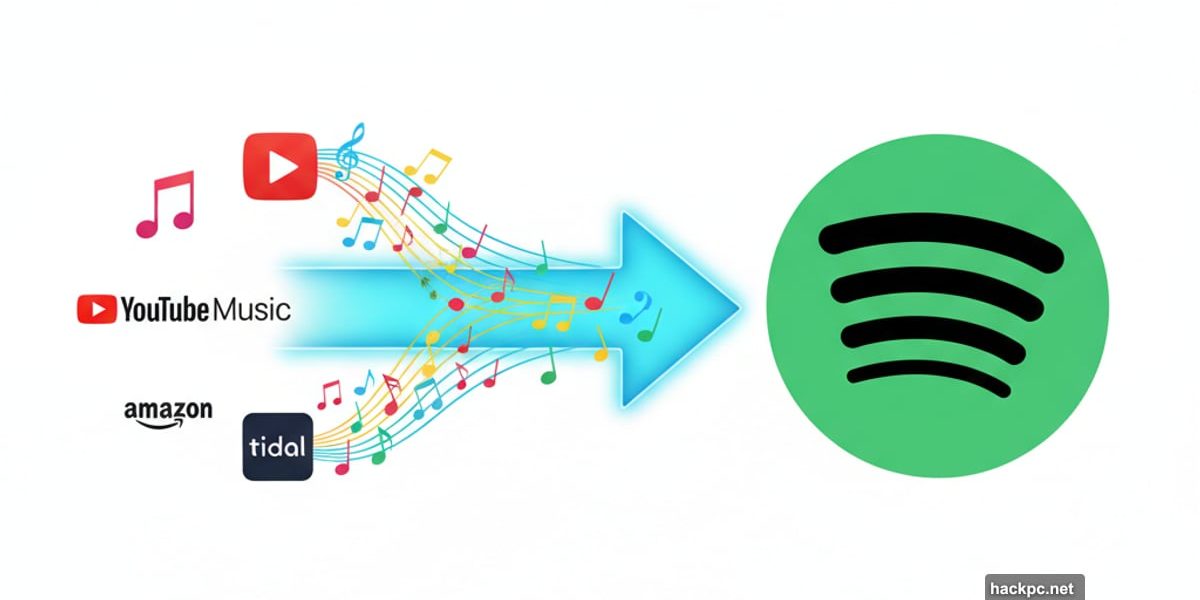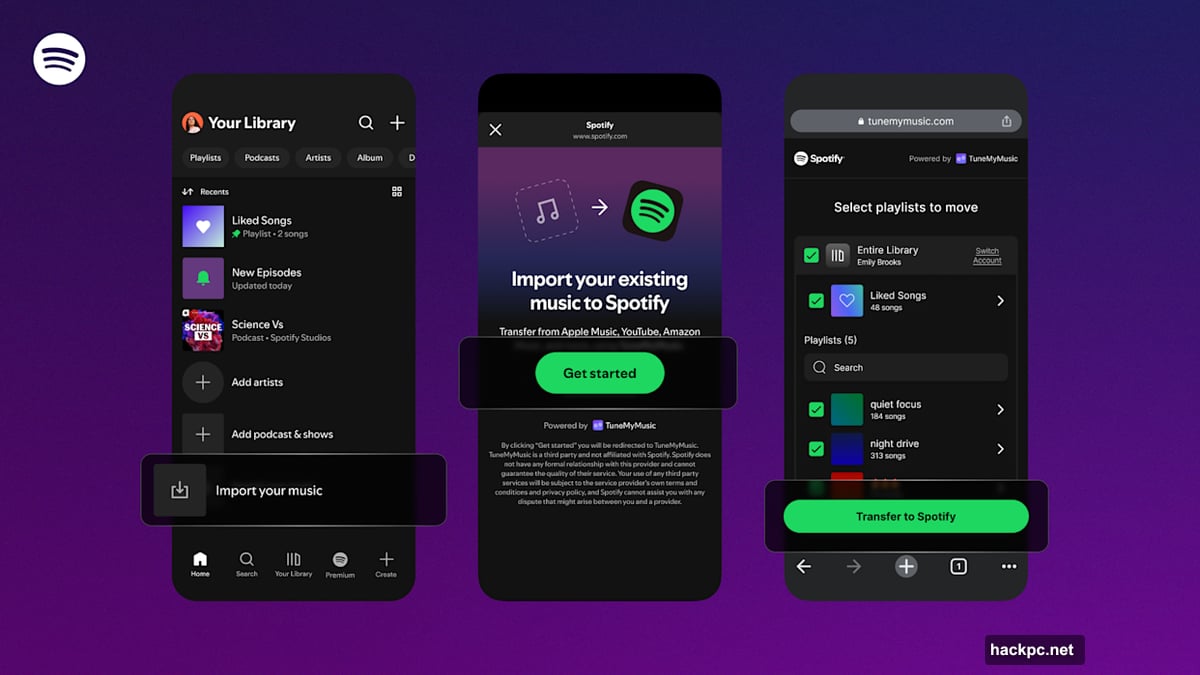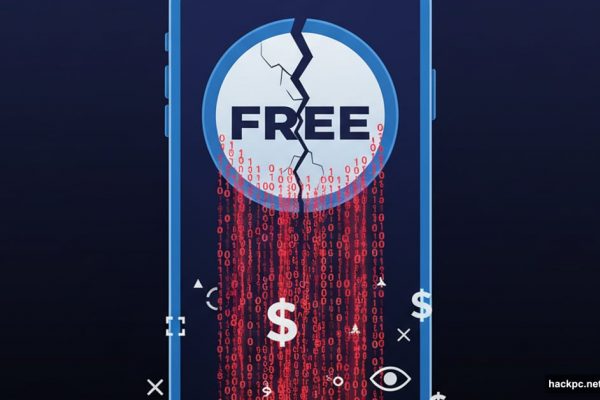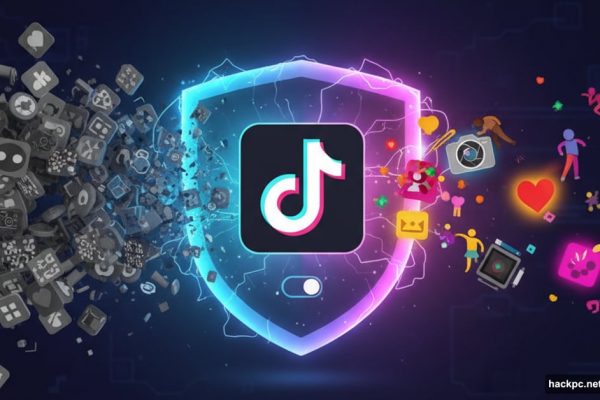
Spotify wants all your playlists. And now it’s actually simple to bring them over.
The streaming giant just baked playlist importing directly into its mobile app. No third-party workarounds needed anymore. Just tap a button, pick your old service, and watch your music library migrate. This changes the friction of switching platforms completely.
TuneMyMusic Integration Lives in Your Library Now
The new feature sits at the bottom of Your Library in the Spotify mobile app. Tap “import your music” and you’ll connect through TuneMyMusic’s service.
The process bounces you into your mobile browser briefly. Then you select which streaming platform you’re leaving behind. TuneMyMusic handles the heavy lifting from there.
Here’s what makes this notable. Previously, you needed to find TuneMyMusic yourself, create an account, and navigate their standalone website. Now Spotify brings that functionality directly into the app interface. One less barrier to switching.
Plus, the integration supports nearly every major platform. Apple Music, YouTube Music, Amazon Music, and Tidal all work. So does Deezer, Pandora, and a bunch of smaller services you might have tried years ago.
Your Original Playlists Stay Put

Worried about losing your carefully curated collections? Don’t be.
The transfer copies your playlists rather than moving them. Your source library remains untouched. Think of it like duplicating files between folders instead of cutting and pasting.
That means you can test Spotify without commitment. Keep paying for Apple Music while you evaluate whether Spotify’s recommendations and interface work better for you. If you hate it, nothing’s lost.
Moreover, you could maintain playlists across multiple services simultaneously. Some people prefer different platforms for different contexts. Spotify for discovery, Apple Music for lossless audio, YouTube Music for those obscure remixes that only exist there.
Apple Music Already Did This First
To be fair, Apple built similar functionality into Apple Music ages ago. iPhone and iPad users can transfer playlists directly through Settings. Android users and web browsers get the same option.
But Apple’s approach only works for bringing music into Apple Music. Spotify’s integration flows both directions since TuneMyMusic supports exports too. You could theoretically use Spotify as a temporary holding spot before moving elsewhere.
Still, this feels like Spotify playing catch-up rather than innovating. The streaming wars pushed all platforms toward reducing friction. Nobody wants you to feel locked into their competitor’s ecosystem.

Playlist Customization Sweetens the Deal
Once your playlists land in Spotify, you get access to features other platforms lack.
Collaborative playlists let friends add songs directly. Great for road trips or parties where everyone wants input. You control who can edit, so random people can’t trash your workout mix.
Then there’s custom cover art. Design your own playlist artwork instead of accepting whatever generic thumbnail the algorithm generates. Small detail, but it makes playlists feel more personal.
Spotify also lets you blend playlists with friends, creating mixes that pull from both your listening histories. Apple Music has some social features, but Spotify built its reputation on sharing and discovery.
The Bigger Picture: Platform Lock-In Is Dying
This move signals something larger than just Spotify convenience.
Streaming platforms realize they can’t trap users anymore. People expect portability. If your service doesn’t make switching easy, competitors who do will eat your lunch.

We’re seeing this pattern across tech. Cloud storage services let you export data freely. Email clients support universal protocols. Even gaming platforms finally embrace cross-play and cross-save features.
So while Spotify’s integration helps them specifically, it also reflects industry-wide pressure. Users demand control over their digital lives. Companies that respect that expectation win long-term loyalty.
Worth Switching? Depends on Your Priorities
Spotify excels at music discovery. Its algorithm crushes competitors for surfacing new artists and building personalized playlists. Plus, the free tier actually works if you tolerate ads.
But audio quality lags behind Apple Music and Tidal. Spotify’s highest tier maxes out at 320kbps, while Apple delivers lossless audio. Audiophiles notice the difference, especially with decent headphones.
Then there’s ecosystem integration. Apple Music seamlessly connects with HomePods, CarPlay, and Siri. Spotify works across more devices overall, but the Apple experience feels tighter for iPhone owners.
Pricing sits roughly equal across platforms. Most charge $10.99 monthly for individual plans, $16.99 for family subscriptions. Spotify occasionally runs promotions for new subscribers, though.
The playlist import feature removes one major switching pain point. Now the decision comes down to actual platform preferences rather than the hassle of rebuilding your music library. That’s how competition should work.



Comments (0)